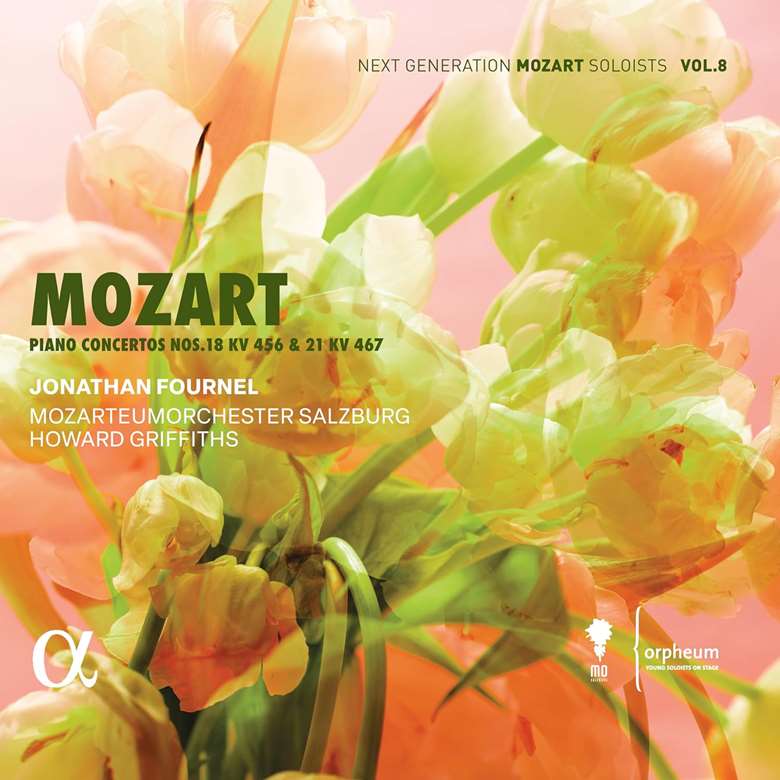Mozart: Piano Concertos – No 18, K456; No 21, K467 (Jonathan Fournel)
Jed Distler
Friday, March 8, 2024
Fournel’s assured pianism belies the fact that this release marks his recorded concerto debut

Volume 8 in Alpha’s ‘Next Generation Mozart Soloists’ series features two piano concertos: one an underrated masterpiece, the other a popular favourite. The latter is the beloved C major Concerto, K467, where the soloist often precedes his or her entrance in the Rondo finale with a short cadenza-like passage. Mozart didn’t supply one, so pianists usually work something out in advance, or improvise if they dare. Then there are those who don’t bother, and simply launch into the theme as written, such as Artur Schnabel and Dinu Lipatti.
This is why I invariably jump ahead and check out the Rondo first whenever a new K467 recording crosses my reviewer’s desk. Jonathan Fournel enters with descending sixths in the right hand that pick up from where the orchestra leaves off in the same tempo. As the sixths ascend, they soon change into single notes that slow down when leading into the theme proper. This sets the tone for the young pianist’s effervescent fingerwork and witty repartee throughout the movement, where his exchanges with the woodwinds emerge as lively conversations. His legato cantabiles in the ‘Elvira Madigan’ Andante float with ease over the orchestra’s gently buoyant triple-metre accompaniment. Fournel also distinguishes himself in the opening Allegro maestoso. He manages to convey both long-lined sweep and pinpoint articulation in the development section’s arpeggiated build-up, while supporting his right-hand phrases with more attention to bass lines than usual. And kudos to the pianist for not just choosing Dinu Lipatti’s inventive cadenza but also for playing it wonderfully well.
While the Mozarteumorchester Salzburg’s woodwinds stand out under conductor Howard Griffiths’s watch, I am bothered by the strings, whose articulation reflects the period-instrument movement’s least attractive characteristics: repressed vibrato and diminuendos that are gratuitous to the point of mannerism. In the opening ritornello of the Allegro vivace of the B flat major Concerto, K456, for example, the emasculated string tone and the vibrancy of the woodwinds seem to occupy their own worlds, unlike Sándor Végh’s far more colourful and expressive chamber forces in the recordings with pianist András Schiff (Decca). Also compare the present recording’s puny, threadbare orchestral framework in the Andante alongside Végh’s robust transparency and shapely inner voices, and you’ll realise that Fournel is doing the heavy lifting, so to speak. By contrast, Griffiths elicits incisive and well-sprung ensemble playing in the Rondo, matching Fournel’s unbridled scintillation note for note. Indeed, Fournel’s assured pianism belies the fact that this release marks his recorded concerto debut.
This article originally appeared in the Spring 2024 issue of International Piano. Never miss an issue – subscribe today












